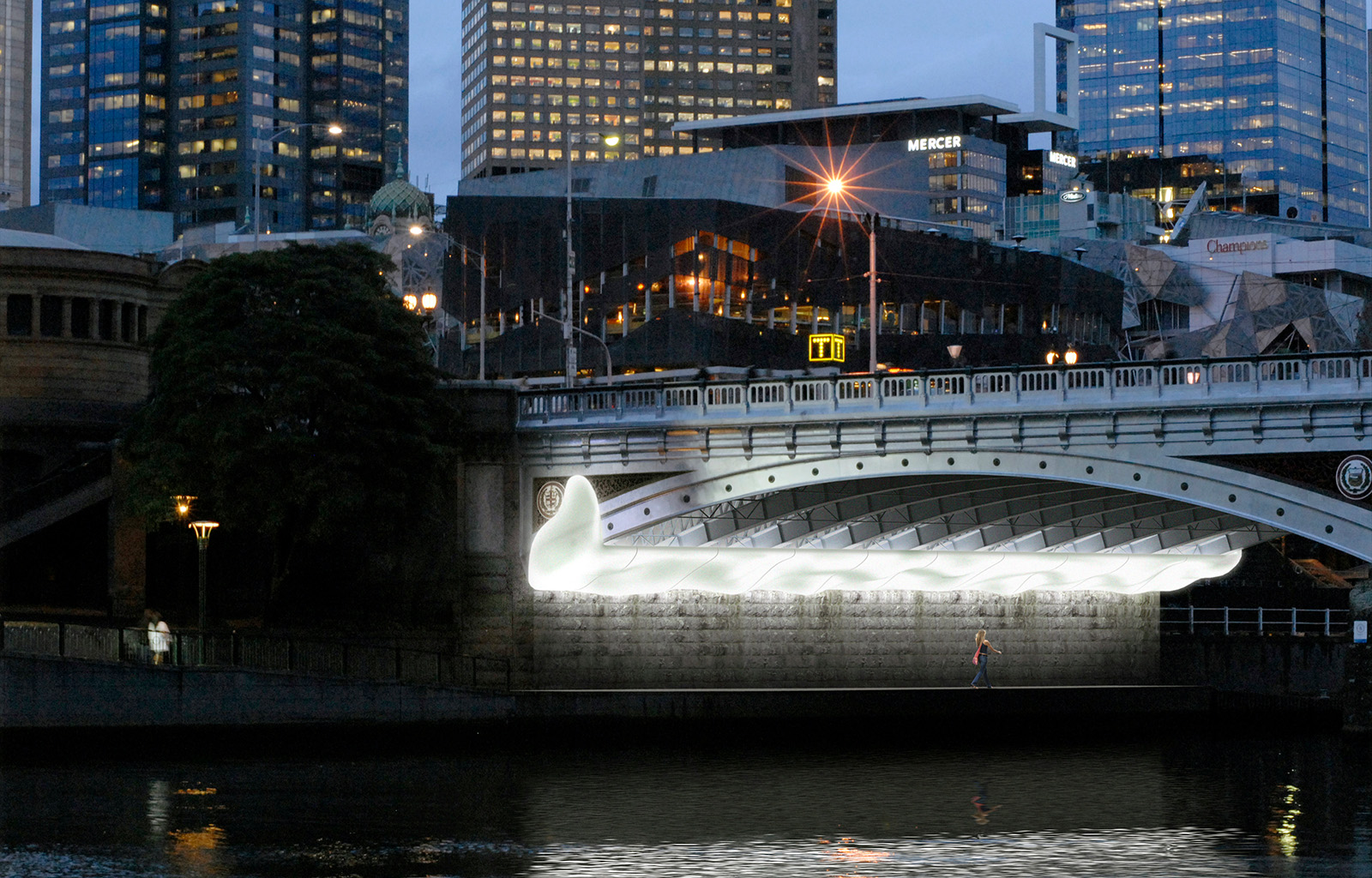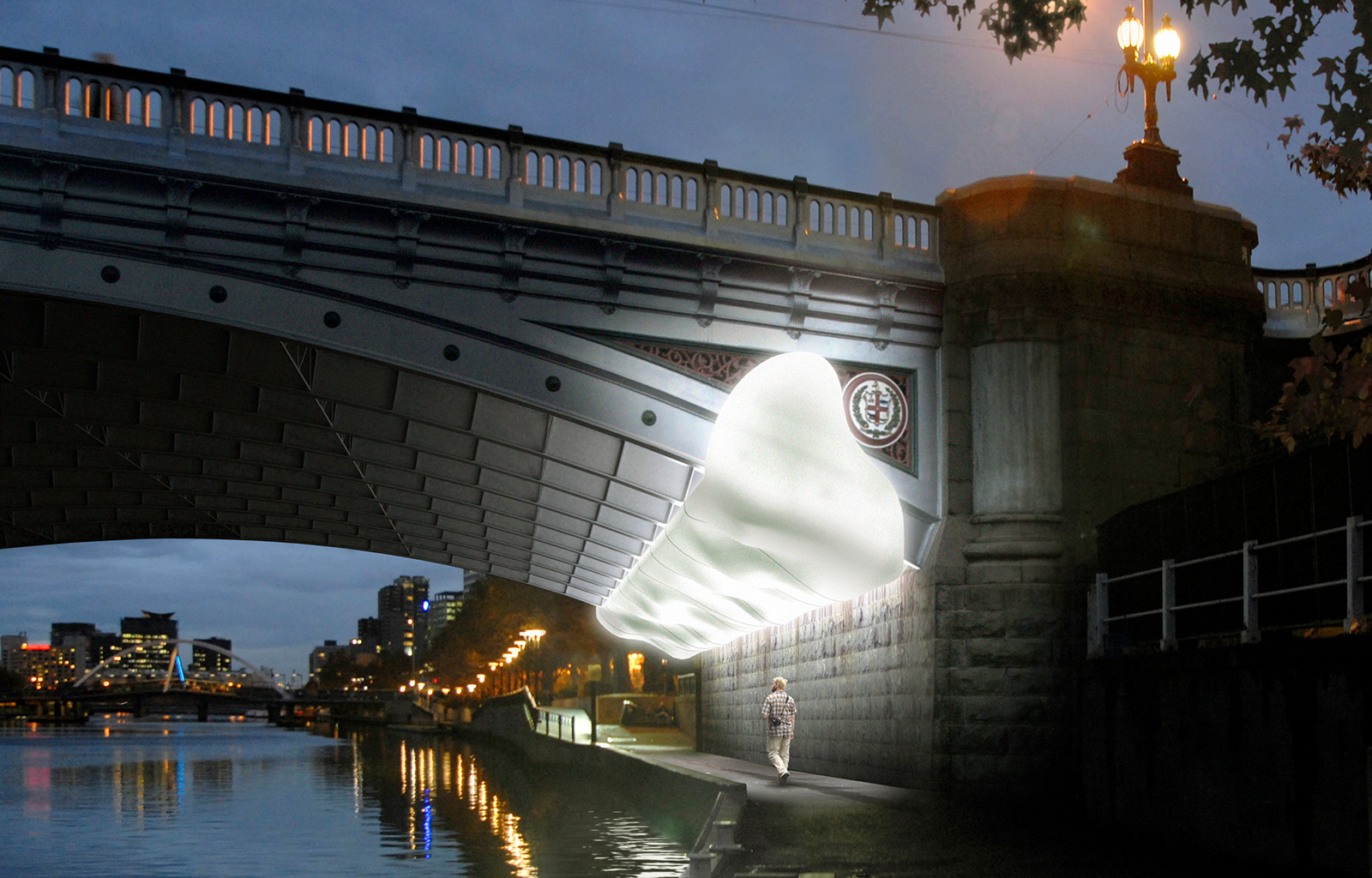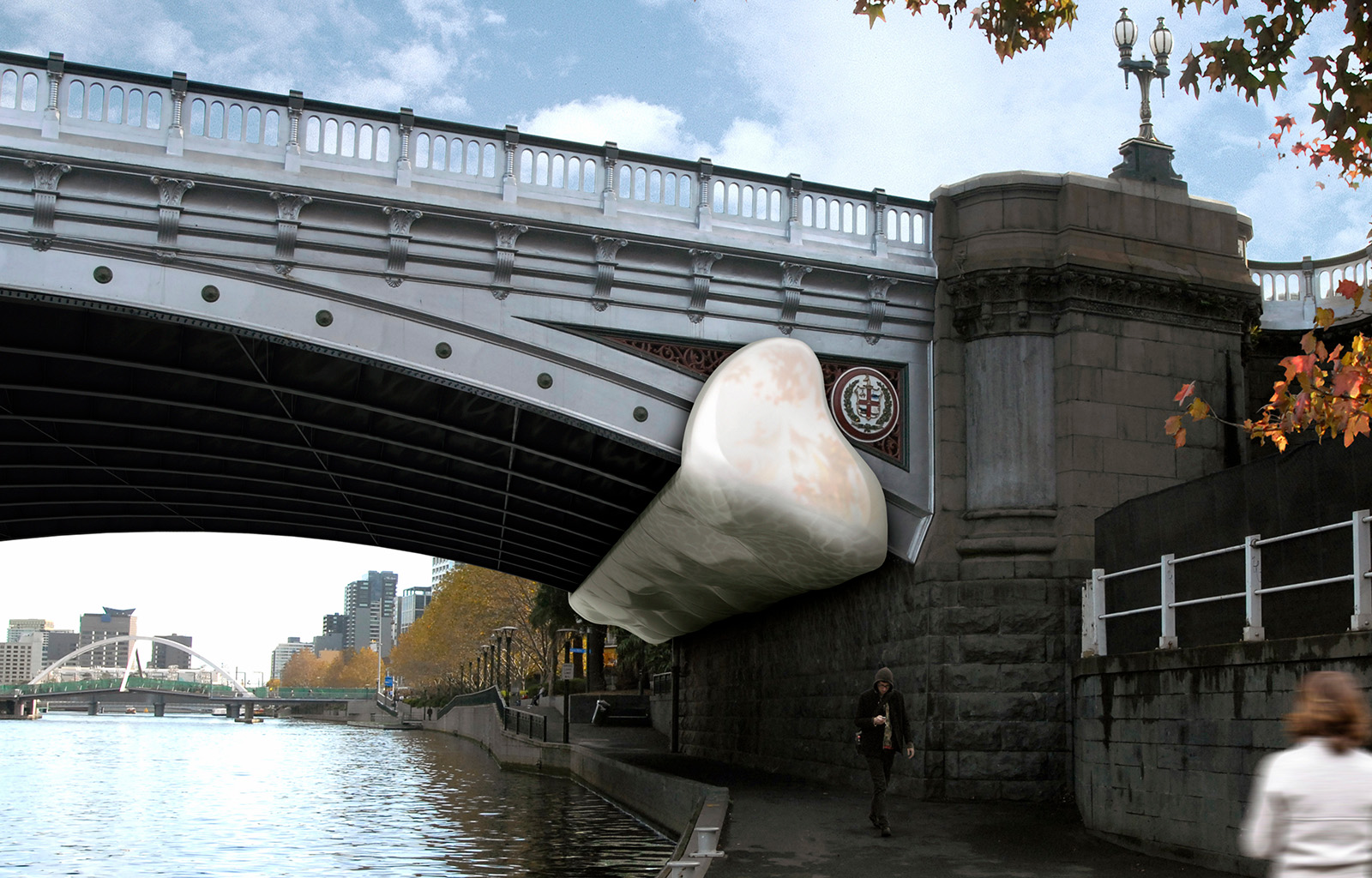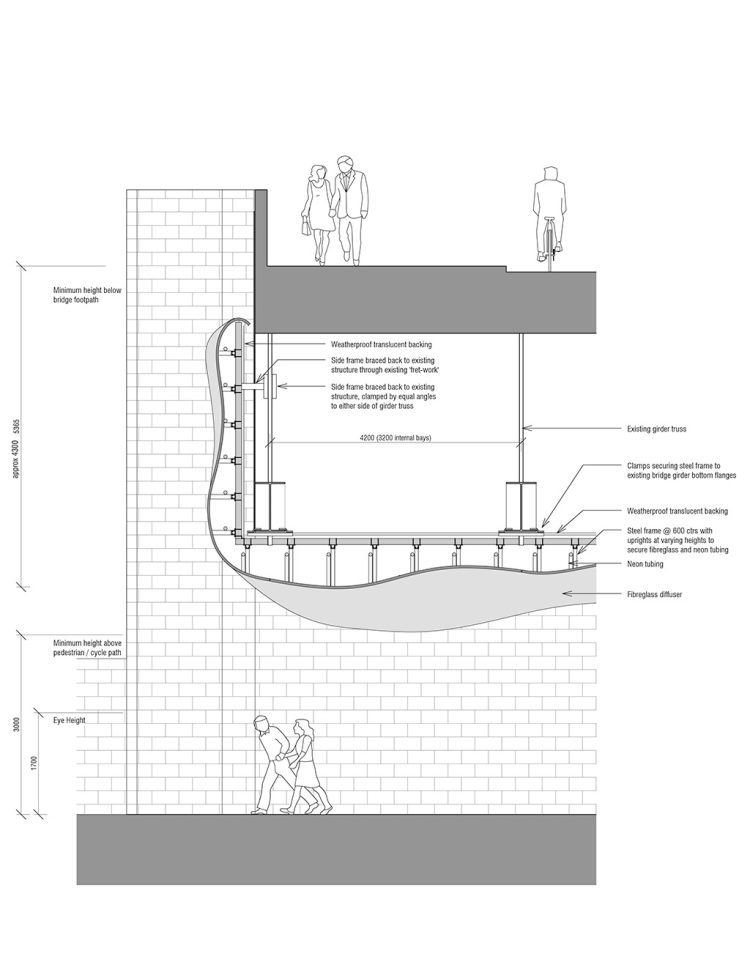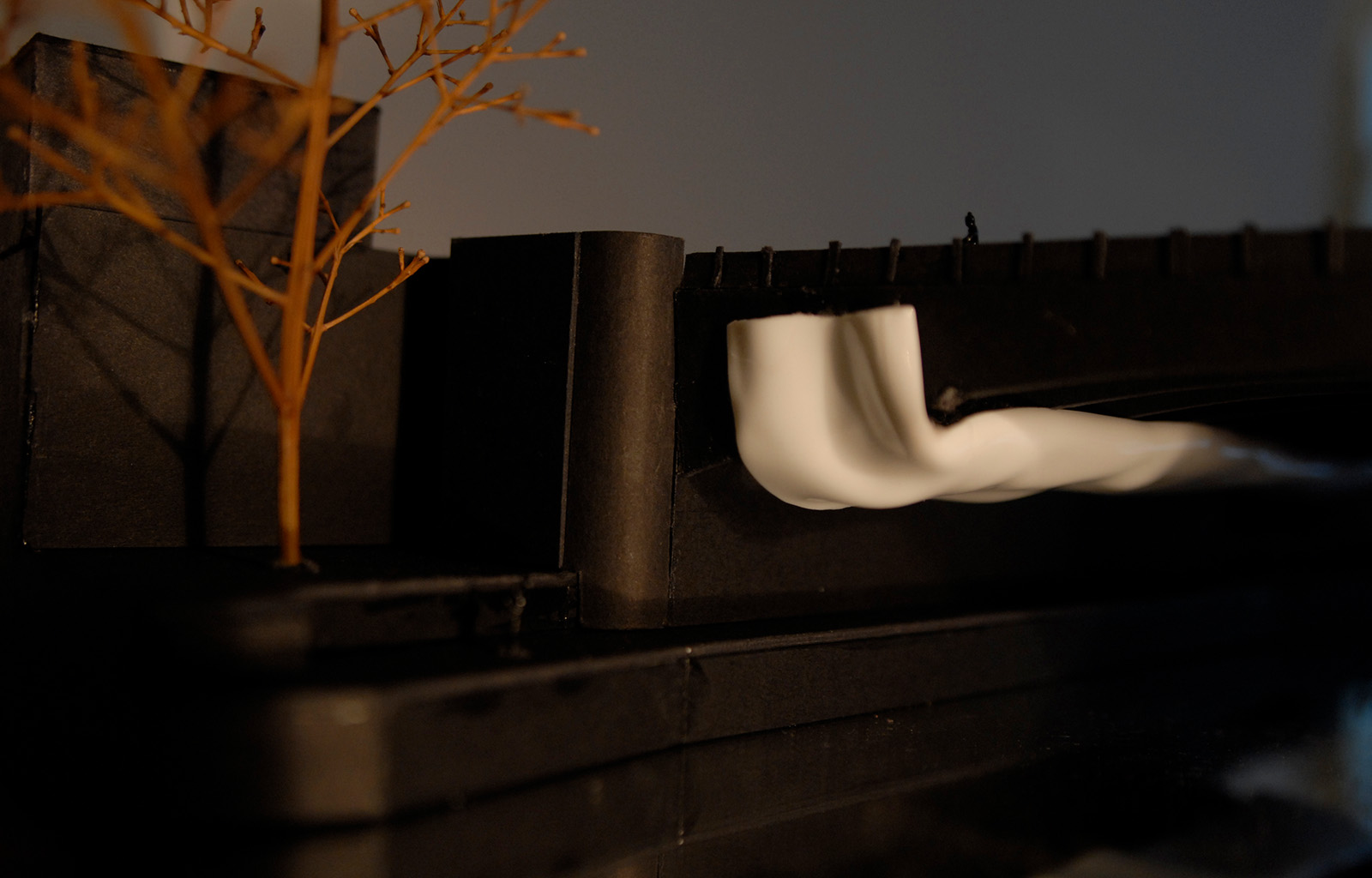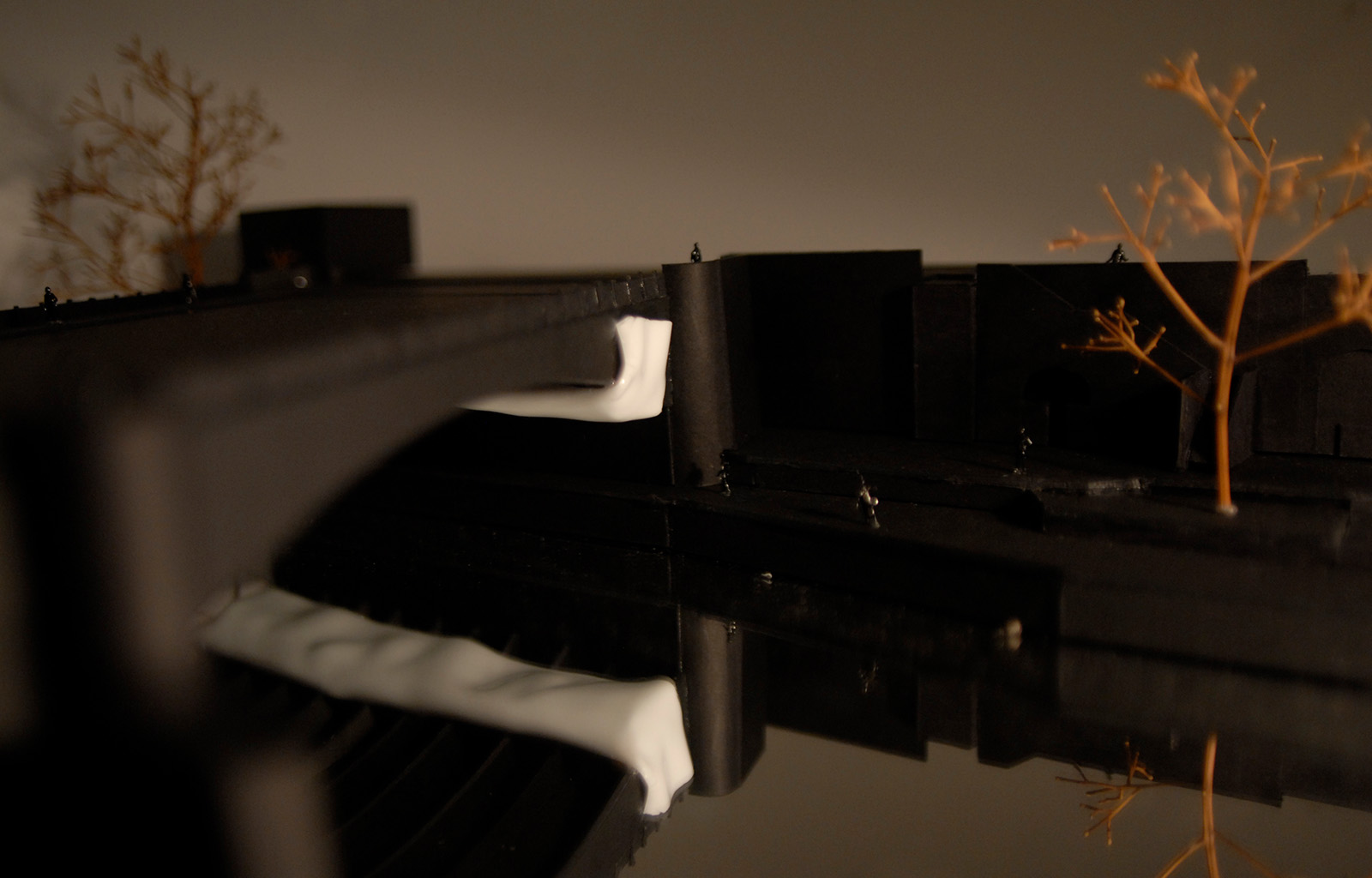Under A Bridge
This project was completed in August 2007 and was a speculative submission to the City of Melbourne for an arts grant. The project was submitted in response to The City of Melbourne Lighting Strategy (2002) which was prepared to guide the improvement of public lighting.
Where
Loneliness is the best way to describe your feelings when walking under Princes Bridge. Under the bridge, you are dislocated from the city’s activity as hundreds of people purposefully travel above you. It is a secluded place that gives temporary inhabitants a moment to reflect away from the concentration of people in the city. No wonder birds roost here, under the shelter of the road above and away from the annoyance of people.
It is a space on the city’s edge, a threshold between the river and the CBD. It straddles both areas but refuses to take on the identity of either. The much-maligned Yarra River’s never-ending ‘ebb and flow’ carries life and death to the bay. Adjacent is the city and its ceaseless flux of people hurrying to and from their daily lives. Between the two a threshold is made without program or function a space that allows all manner of behavior and experience to occur.
Why
The site under the bridge is an ‘un-programmed’ space. This means the site has no physical or experiential elements to determine (program) what behaviours should occur here. As such, the site is seen as ‘full of potential’, as any behaviour or experience can happen, from the sublime (watching the water reflect upon the stone walls) to the frightening (being caught in a dark and wet space in the night) to the pragmatic (walking from one spot in the city to another).
The space under the bridge could lose its character as an un-programmed space if ‘program’ were inserted. Hence, installing an ‘un-programmed’ piece of art makes sense. Simply put, viewing art installations prompts people to formulate their own experiences. Under the bridge, the strange attached creature will become a kind of poetry in people’s daily lives, a glance at the weird and wonderful before getting on with business. It does not dictate what experiences should be had; it simply asks people to view the piece and maybe, just maybe, ask the person next to them, ‘What’s it all about…’
Intent
The intention is that the installation will be read as a parasite (the diffuser) attaching itself to a host (the underbelly of the bridge). Like many animals occupying the nook where the bridge meets the land, the parasite has chosen this space because it provides relative shelter and security from the immediate environment.
During the day, the parasite is ‘asleep’ even though its form (the diffuser) ripples by reflecting and refracting the light from the river. When evening descends, the parasite seems to come alive; it awakens with pulses of light rhythmically flowing along its length. References to how cuttlefish use pulsating lines of light to mimic their environment and alarm their predators come to mind.
People walking over the bridge, along the north bank, adjacent to the rowing sheds, or along Southbank can see the installation during the day and, obviously, during the evening. They will be engaged with the light emanating from the diffuser itself and its reflection on the river’s surface. The undulating organic form of the diffuser will take on an increasingly random character when its reflection is viewed on the river’s surface.
How
Neon lightning will be encased in a waterproof and robust light diffuser. The diffuser will be made from fibreglass on the bottom side of the light, facing the river. The other side of the diffuser will be made from a translucent acrylic, which will diffuse light up to and into the underside of the bridge, revealing its structure. The diffuser will be screw-fixed to a steel frame clamped to the existing structure of the bridge, causing no permanent damage to the historical bridge.
- Year
- 2007
- Team
- Emilio Fuscaldo
